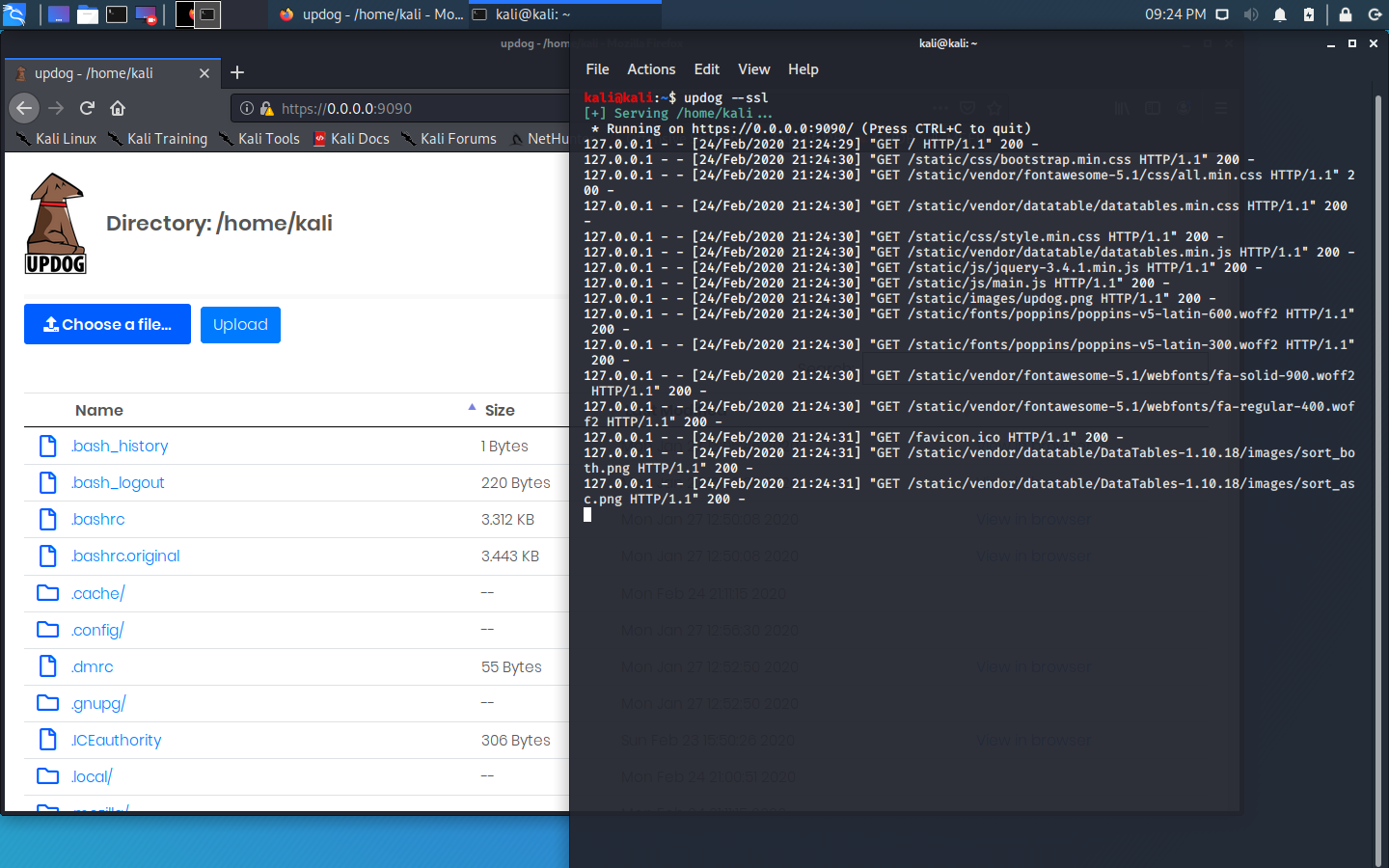What is Updog?
By Greenjam94
Friends among my various hacker spaces have shared links to a new tool called Updog created by Sc0tfree. A python3 implementation of an HTTP server that is intended to replace Python2’s SimpleHTTPServer module. I had to test it out myself and these are my opinions. In many hacker training courses, it is vital to be able to host your tools on a web server to download them onto target machines. One example would be to download a network scanning tool once you’ve gained a shell on the first machine of a target network. With Python2, this was done with a one line command python -m SimpleHTTPServer 8000. Let’s take a look at some of the options now that Python2 is finally being sunset.
Installation
To get started, I set up a brand new virtual machine. I downloaded the kali 2020.1 VirtualBox image from Offensive Security’s website. One big change with 2020.1 is a default non-root user, so to log in you will need the new standard credentials. Instead of root:toor, now login with kali:kali. toor is still the password used by the root user.
sudo apt update
sudo apt install -y python3-pip
pip3 install updog
export PATH=$PATH:/home/kali/.local/bin
Once Kali is running, it is time to install updog. The README on github mentions using pip3, so get that done first. After pip3 installs updog, the output gives a warning of the tool not being on PATH. You can add to the environment variable for a permanent fix.
Usage
Updog is super simple, and most importantly short, to run. By default you can cd to the directory with the files you want hosted and run updog. This will start a local web server on port 8080.
There’s a few options you can play with as well. Setting a custom port is easily done with the -p option, HTTP basic auth can be used with --password, and encryption using SSL is possible with --ssl.

Comparison
So why use Updog? To answer this, I’m going to do an apples to apples comparison between Updog and the python3 variant of the SimpleHTTPserver one liner: python3 -m http.server 8000
- Usability: +0 In a pinch, whatever is faster to type I’ll use first. However http.server doesn’t require setup
- Appearance: +1 Updog offers a superior well-designed interface for access. If manually downloading files and visually accessing your machine from a browser, Updog looks a lot better than the default directory index you’d see with http.server
- Network Volume: -1 The graphics of updog require a few static files to create, not uncommon when visiting websites, it is considerably noisier on a network than a single request to download a file.
- Security: +2 Updog offers encryption. Using a self-signed SSL certificate prevents network traffic from being readable. Setting up a password can also prevent any other users who find your web server from downloading your tools and payloads.
Below you can see a visual comparison of both web servers, the command required to run them, and the resulting network traffic of just visiting the hosted directory.


Side by side comparison of http.server one liner and updog –ssl on Kali Linux 2020.1
Conclusion
Overall, I’d recommend trying Updog on your next hacking engagement or CTF. Just keep python3 -m http.server in your back pocket. No single tool is perfect for every engagement. It’s good to have multiple ways to move files to a target machine. Both of these tools use python. For even more options to save in your toolkit, checkout this gist with all the web servers variations in multiple web languages.